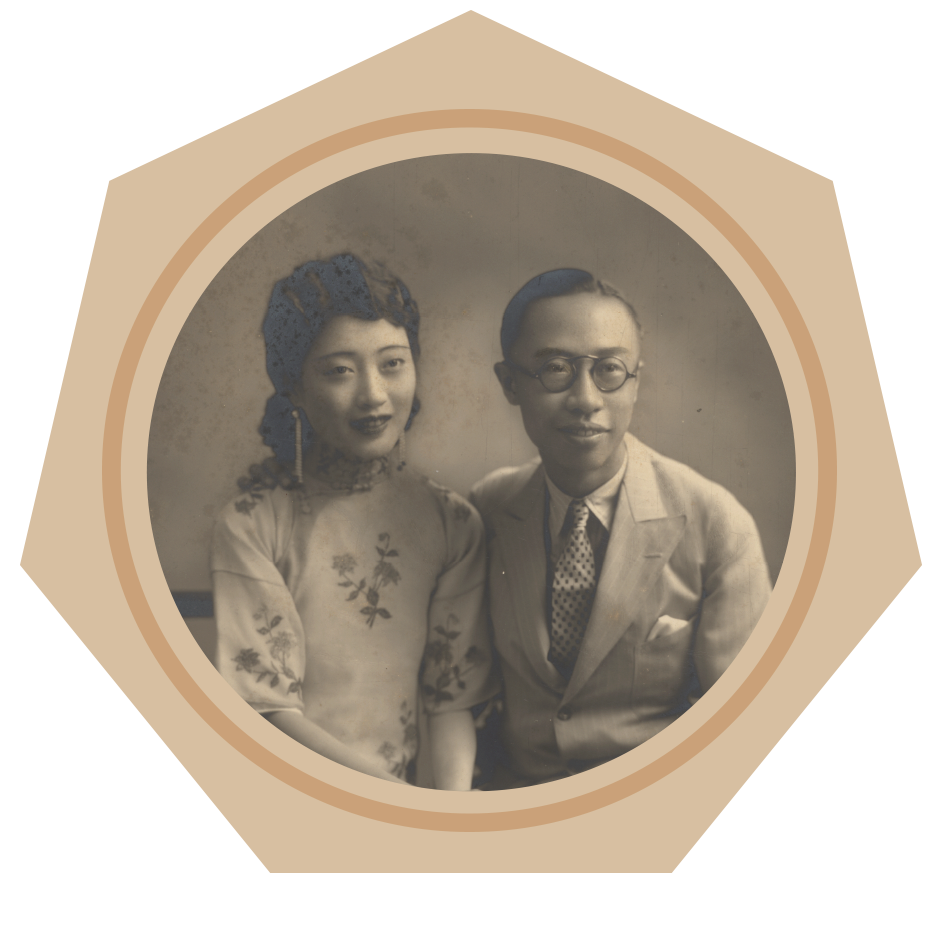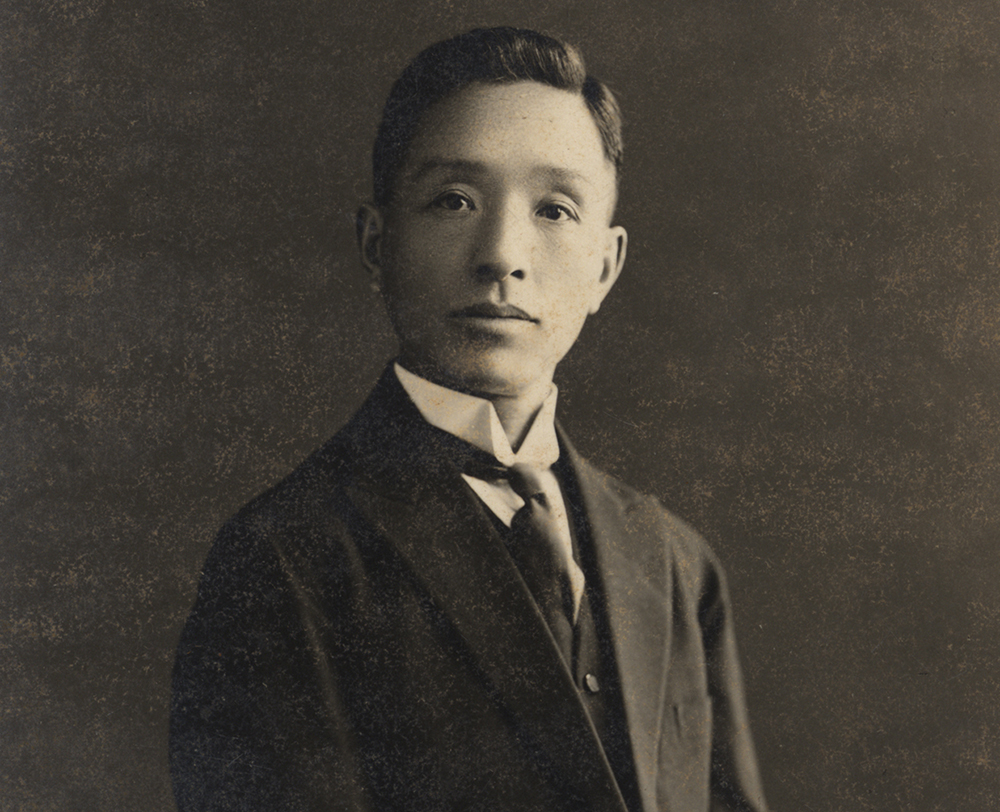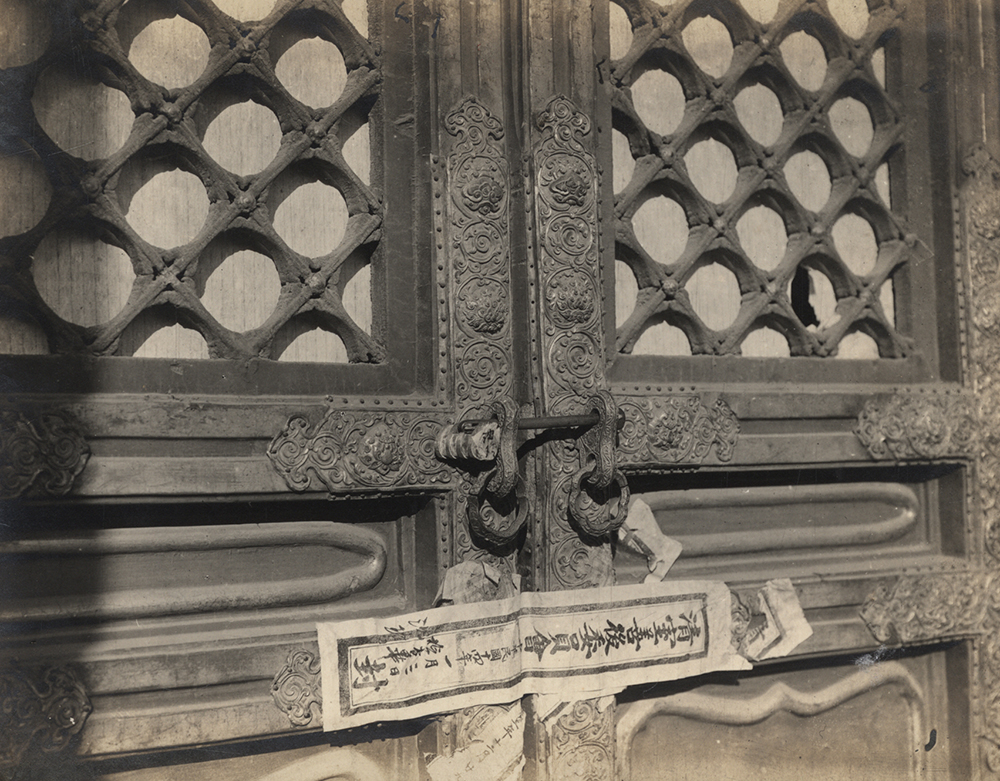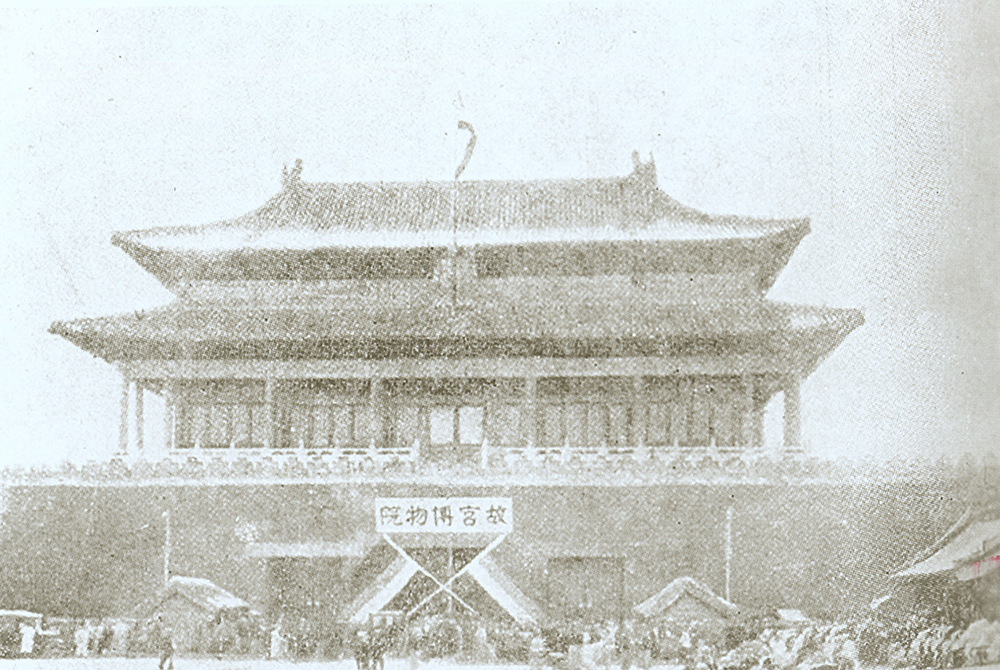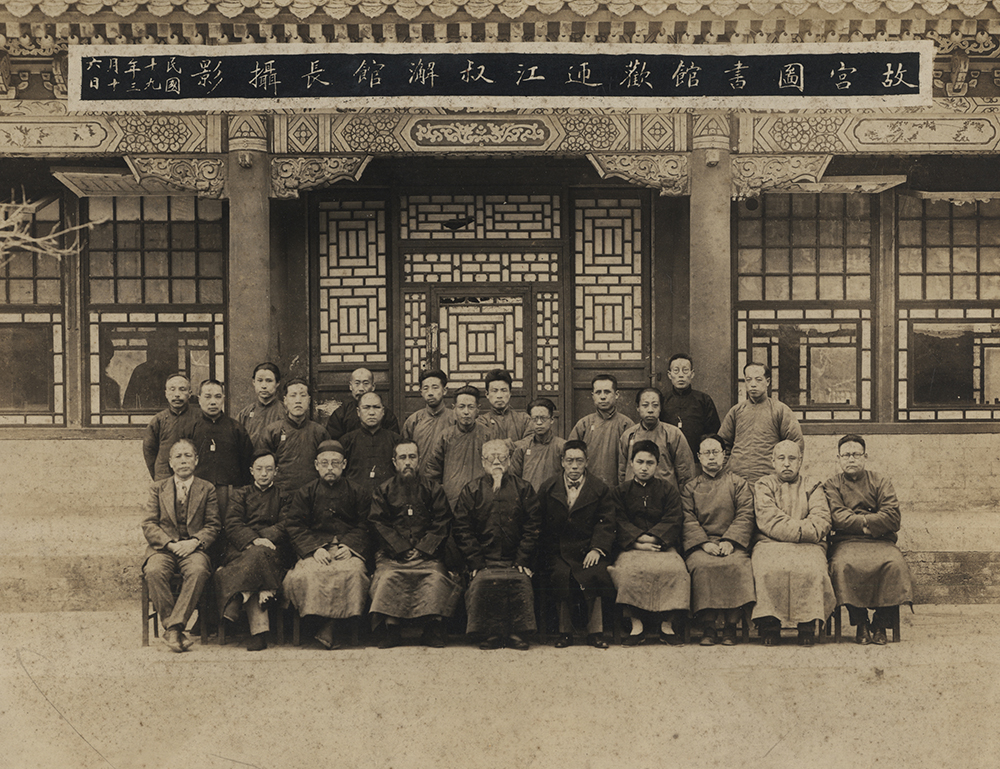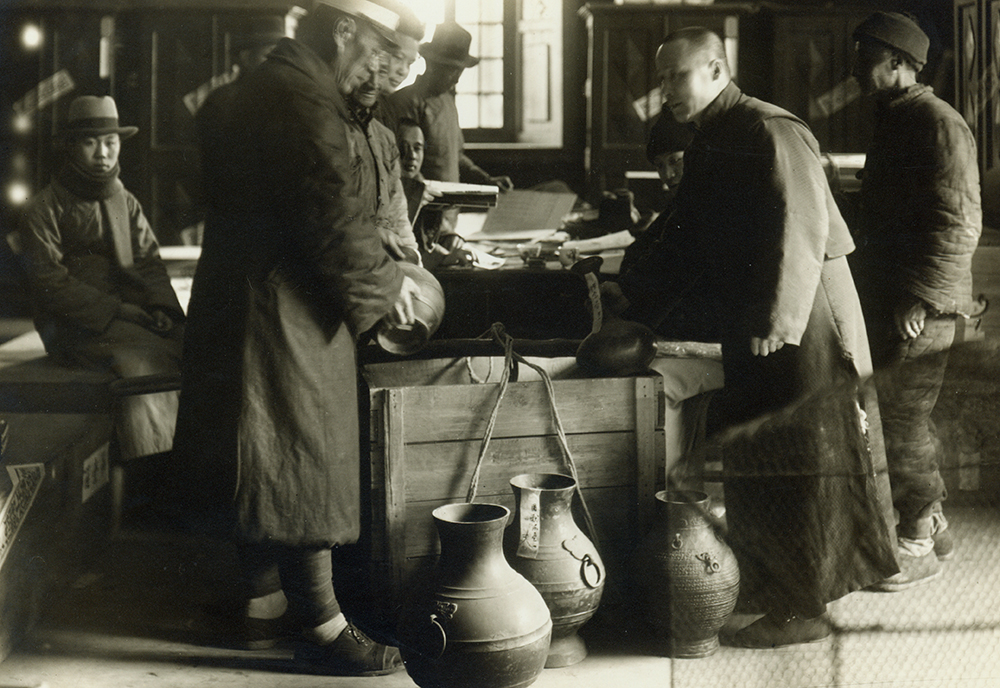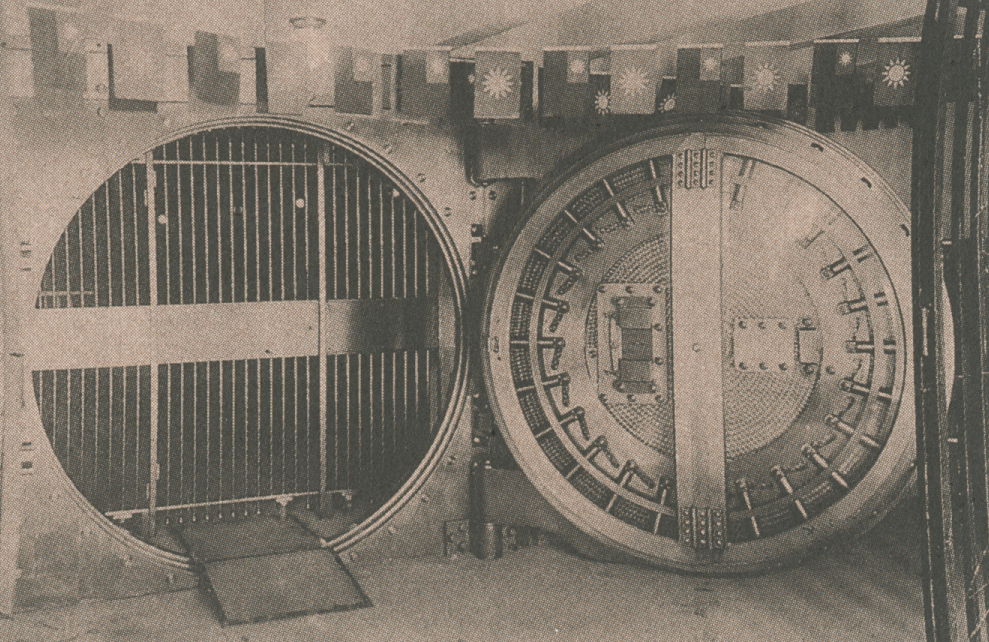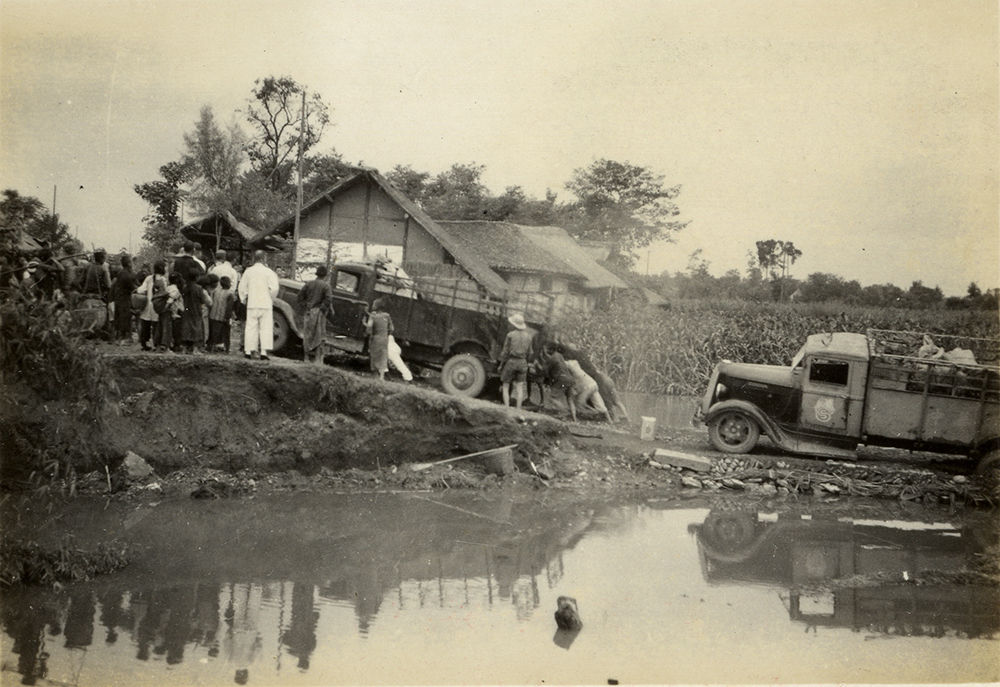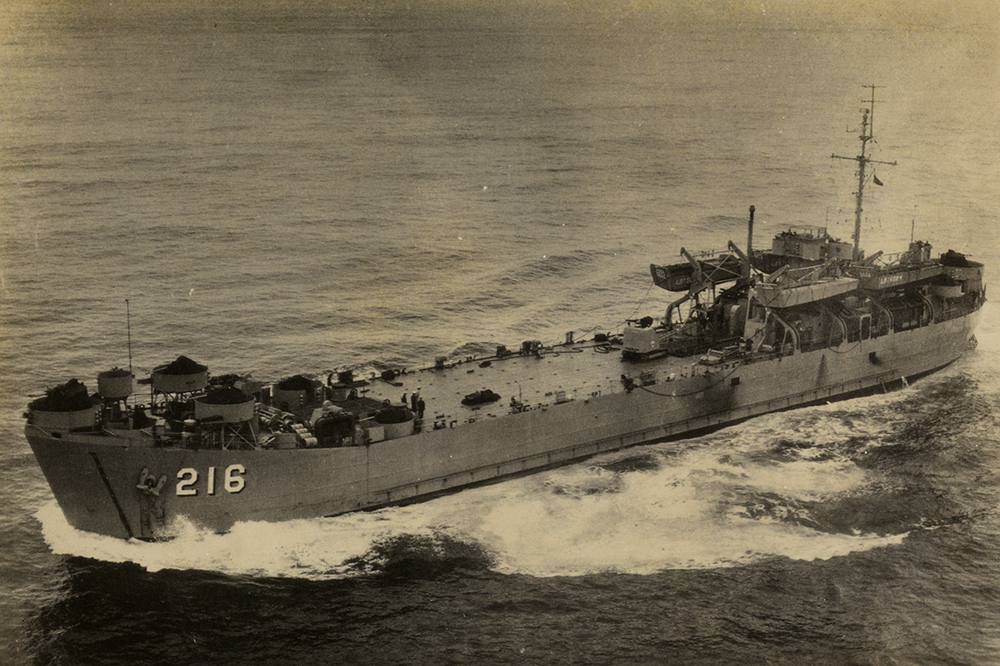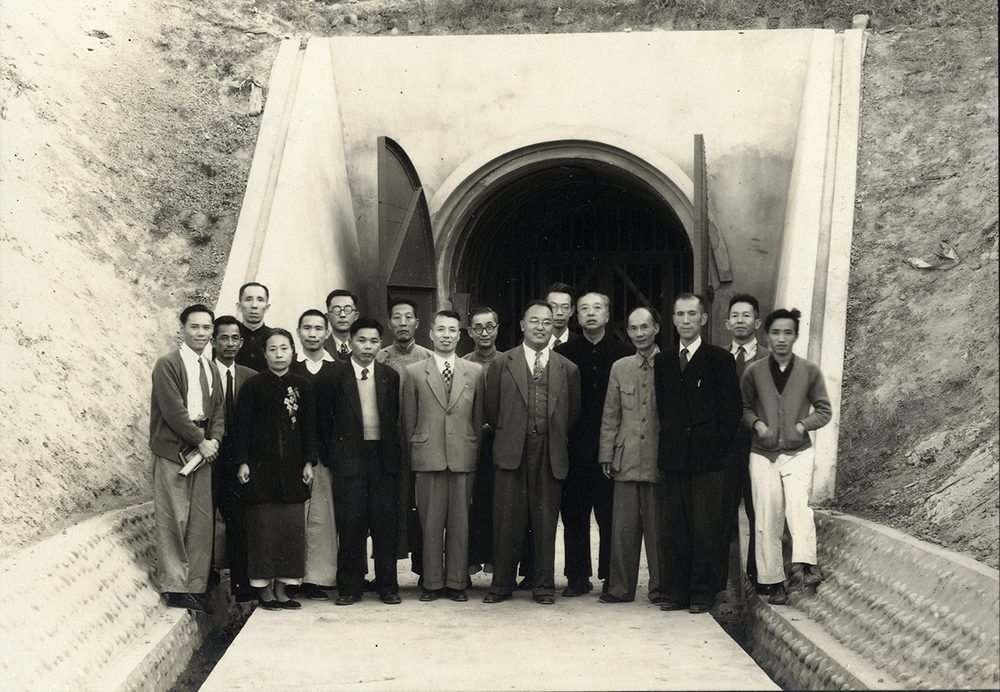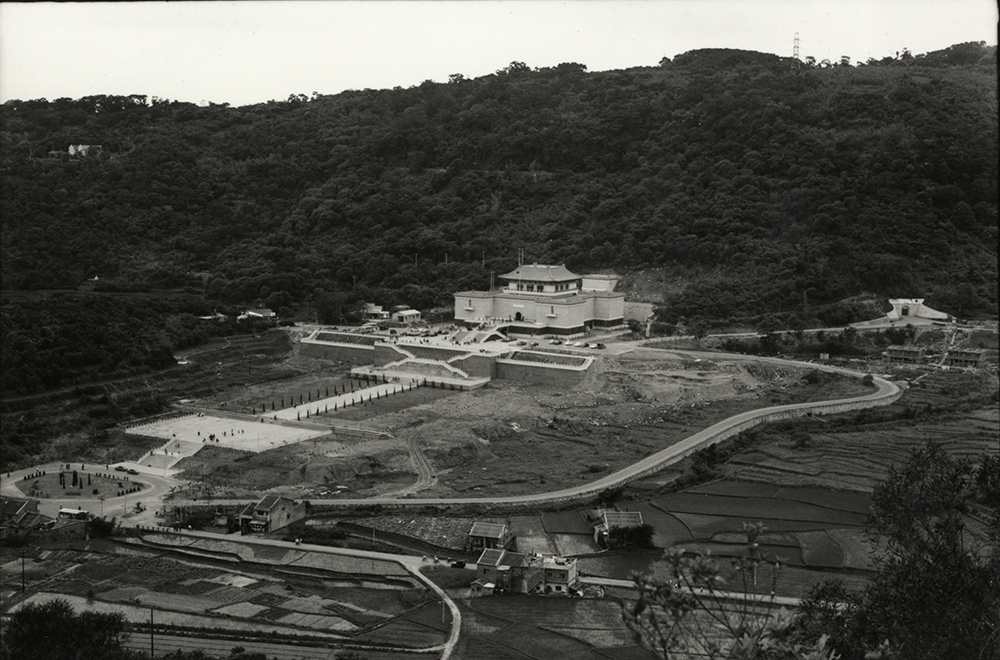In 1925 the government of the Republic took in the cultural relics of the Inner Court of the defunct Qing regime, and in its premises established the Palace Museum, with exhibitions of objets d'art in their original locations. What had previously been the private collections of the imperial household were now open to the public, shared and enjoyed by the nationals of the Republic. In 1931 the Japanese militarists instigated the Mukden Incident, trumpeting their ambition in invading China. Resolving to protect the gem of China's cultural heritage represented by the Museum's collections, the National Government immediately decided to move the treasured objects southward to Shanghai and Nanjing, and westward to Sichuan. When Japan was defeated, the treasures were brought back to Nanjing. However, they were forced to move in the wake of China's domestic unrest eastward across the straits to the island of Taiwan, temporarily stored in Beigou, Taichung. In 1965 the National Palace Museum was restored in Waishuangxi in the suburbs of Taipei, and the art treasures were finally made available for public viewing.
The images presented in this section are meant to outline the history of the National Palace Museum. Not only do they highlight the Forbidden City in the 1920s as the prototype of a national museum and the arduous journey its treasures had embarked upon during the years of war, but also reveal the important undertakings in the safeguarding of the cultural heritage in the days of its temporary storage in Beigou by those who had escorted the collections to Taiwan.
Puyi Leaving the Forbidden City
- Courtesy of the Palace Museum, Beijing
After launching the Beijing Coup in late October 1924, the warlord Feng Yu-xiang (1882-1948) of the Zhili clique, who was in the opinion that the political unrest in the newly established Republic had its root in the continued presence of Puyi (1906-1967) and his court in the Forbidden City and in the monarchists' pursuit of his return to the Manchu throne and the restoration of the Qing regime, asked Premier Huang Fu (1880-1936) of the Regency Council to pass in a meeting on the 4th of November the Amendment to the Articles of Favorable Treatment of the Qing Imperial Household, with five articles demanding that Puyi "forever abandon his imperial title" and that he and the imperial household "leave the Forbidden City immediately." Early the next morning, Commanding Officer Lu Zhong-lin (1884-1966) of the Beijing Garrison sent a contingent of troops to the Shenwumen Gate to replace the police force around the Forbidden City's moat, and at a little past 10:00 am, together with Police Commissioner Zhang Bi and the Civilian Representative Li Yu-ying (1881-1973), proceeded to the imperial living quarters and asked Puyi to hand over the imperial seals and the palaces, and to leave the Forbidden City. At 3:00 pm Puyi and his family moved to the residence of his natural father, Zaifeng (1883-1951), Prince Chun of the First Rank. In the following days palace eunuchs and maids also left the palaces with their personal belongings. They were, however, each searched and checked by Imperial Guards, under the surveillance of soldiers of the National Army, for historical relics which were considered state property.
Committee for the Disposition of the Qing Imperial Possessions
- Courtesy of the Palace Museum, Beijing
On the 6th of November the Regency Council ordered the State Council to organize, with close associates of the imperial household, a Committee for the Disposition of the Qing Imperial Possessions to take a comprehensive inventory of the contents in the palaces, and to distinguish between state property and private possessions, with the aim of garnering public trust. The Committee was expected to take temporary custody of all public property, and to make all palaces available, once the inventory was taken, for use by a national library and a national museum. Li Yu-Ying was appointed Chairman of the Committee, and an office was promptly set up near the Longzong Gate, followed by the grouping of palaces into various areas. With the palaces sealed off, the Committee officially took on the inspection and inventory on the 24th, starting with the Qianqinggong and Kunninggong Palaces.
Founding of the Palace Museum
On September 29, 1925, the Committee for the Disposition of the Qing Imperial Possessions convened, and a resolution to establish the Palace Museum on October 10, modeling after the imperial museums of France and Germany, was reached. It also organized a Provisional Administrative Council, with Li Yu-Ying acting as its President. At 2:00 pm on the 10th the inauguration ceremony was held at the Qianqingmen Gate. At the Shenwumen Gate a flower-decorated archway was erected, and above the entrance hung a green stone plaque inscribed with the characters Gu Gong Bo Wu Yuan (Palace Museum) rendered by Li Yu-ying in the calligraphic style of Yan Zhenqing (709-785). In the ceremony President Li gave a speech on the twists and turns in the preparatory work, and he was followed by Huang Fu, President Wang Zhengting (1882-1961) of the European and American Returned Students Association, President Cai Ting-gan (1861-1935) of the Rotary Club of Beijing, Lu Zhong-lin, Yu Youren (1879-1964) of the Nationalist government committee, and former senator Yuan Liang (1883-1953) of the State Department, each addressing the significance of the Museum's inauguration. After the ceremony, the Committee for the Disposition of the Qing Imperial Possessions sent a circular telegram out to all sectors, announcing the founding of the Palace Museum.
Early Development of the Palace Museum
- Courtesy of the Palace Museum, Beijing
In the early days of its founding, the Palace Museum was affected by the political instability of the Republic and the re-shuffling of warlord regimes. Thanks to the preservation organizations organized by such cultural figures like Zhuang Yun-kuan (1866-1932), Jiang Han (1857-1935), and Chen Yuan (1880-1971) that mediated with warlords of the Anhui, Zhili, and Fengtian cliques to prevent the Beiyang government's interference, the Museum continued to develop, albeit grudgingly. In June 1928 the Northern Expedition launched by the Nationalist government came to a successful close, and China was unified under the Kuomintang flag. In February 1929, Li Yu-ying was named President of the Palace Museum, and Yi Pei-ji (1880-1937) the Director. During Yi's directorship the Museum made significant progress in such areas as organizational re-structuring, the safekeeping and management of collections, architectural renovations, the organization of exhibitions, and publishing and dissemination, marking the most flourishing period in the Museum's early development on the Mainland.
Relocation of the Museum's Treasures to the South
- Courtesy of the Palace Museum, Beijing
On the 18th of September, 1931, the Japanese Kwantung Army engineered the Mukden Incident. In December the Museum teamed up with the Exhibition Office for Ancient Artifacts in the Outer Court of the Forbidden City and jointly set up a Provisional Police Force to attend to all security and defense measures. At the same time, the finest pieces were selected from the Museum's collection departments for packing and crating in preparation for relocation when necessary. In January 1933 Japanese troops reached the Shanhai Pass, launching offensives on various passes along the Great Wall. In light of the imminent danger the city of Beiping was in, the Museum's Administrative Council held an emergency meeting, and the resolution of moving the treasured artifacts southward was made. At the direction of the Executive Yuan, the cultural relics were to be temporarily stored in rented warehouses in the French and British concessions in Shanghai. Between February 6 and May 23 five batches of crated artifacts were transported to Shanghai. In May of that year the Executive Yuan appointed Ma Heng (1881-1955) the Palace Museum's new Director.
Repository of the Palace Museum's Branch in Nanjing
In December 1934 the Standing Committee of the Museum's Administrative Council met and passed the proposal by Wang Shi-jie (1891-1981), then Minister of Education, of building a repository at the celebrated historical site in Nanjing, the Chaotiengong Temple. The resolution was promptly approved by the Executive Yuan. On April 15, 1936, the foundation of the repository was laid, and the construction completed in August. The facility was a reinforced concrete structure of three stories, and each story was designated a separate storage area. At the foot of the hill in the rear of the structure there was a cave-like, covert storage facility, with air-conditioning and machine-operated temperature and humidity controls. On September 26, the Repository was inaugurated, and it was to become the home of the Museum's treasured artifacts arriving from Shanghai between December 9 and 22 in five batches.
The Museum's Treasures Moving West
- Courtesy of Mr. Zhuang Ling
In July 1937 the Marco Polo Bridge Incident occurred on the outskirts of Beiping, and in August came the Battle of Shanghai, putting Nanjing in imminent jeopardy. Director Ma Heng's plan to send the treasured relics in Nanjing westward along three routes was approved by the Executive Yuan. The first batch (south route) went by Hankou, Wuchang, Changsha, and Guilin to arrive in Guiyang, and years later it was evacuated to Baxian in Sichuan. The second batch (central route) arrived in Leshan, Sichaun, via Hankou, Yichang, Chongqing, and Yibing. The third batch (north route) went on to Xuzhou, Zhengzhou, Xian, Baoji, Hanzhong, and Chengdu to arrive in Emei.
The Transfer of the Treasures to Taiwan
- December 1948
- Courtesy of Mme. Qiu Zhihua
The Second Sino-Japanese War ended in September 1945, and the treasured artifacts that had been moved westward to Sichuan were brought from Baxian, Emei, and Leshan to Chongqing, in that order, from where they returned via inland waterways to Nanjing by the end of 1947. In December 1948 the civil war in China reached an acute phase, and the Museum was instructed to send the finest pieces in Nanjing to Taiwan, along with cultural relics and rare books from the Preparatory Office of the National Central Museum, the National Central Library, and the Academia Sinica's Institute of History and Philology. Three shipments were made by late February 1949, and the artifacts and books were temporarily stored in the warehouse of the Taiwan Sugar Company's factory in Taichung.
Joint Administration in Beigou
- Courtesy of Mr. Zguang Ling
In August 1949 the Executive Yuan, in order to accommodate the wartime environment, had the Palace Museum, the Preparatory Office of the National Central Museum, and the National Central Library integrated into a Joint Administration, which was under the control of the Ministry of Education. In April 1950 the storerooms of the Joint Administration in Beigou, Wufeng, Taichung, were erected, and all the treasures that had been moved to Taiwan were stored therein. In May the Executive Yuan reorganized the administrative councils of the Palace Museum and the Preparatory Office of the National Central Museum, and created a Joint Administrative Council, which immediately resolved to take a full inventory of the artifacts. In March 1953 the construction of a cave storage adjacent to the storerooms in Beigou was completed, for storing the crème de la crème of the cultural relics if that should become necessary. A small exhibition gallery was erected in December 1956, and it opened to the public the next March.
The National Palace Museum Reinstated
- Photography by Mr. Zhuang Ling
In consideration of the remote location of Beigou and its difficulty in attracting domestic and international visitors, the Executive Yuan planned, in September 1960, to build a new museum in the suburbs of Taipei, and the task force it created to attend to the relocation eventually decided on the site of Waishuangxi on the city's northern outskirts. In September 1961 land leveling began, and in June the next year the foundation of the new facility was laid. The construction of the new museum was completed in August 1965, and the artifacts of the Preparatory Office of the National Central Museum were then integrated by the Executive Yuan into the Palace Museum. The "Provisional Regulations for the Administrative Council of the National Palace Museum" were soon promulgated, putting the Council under the control of the Executive Yuan. In the same month the Administrative Council convened, electing Wang Yun-wu (1888-1979) its Chairman and appointing Chiang Fu-tsung (1898-1990) Director of the National Palace Museum. On November 12 the National Palace Museum was officially inaugurated, making it possible for the general public to view the imperial treasures that had been brought to Taiwan.

